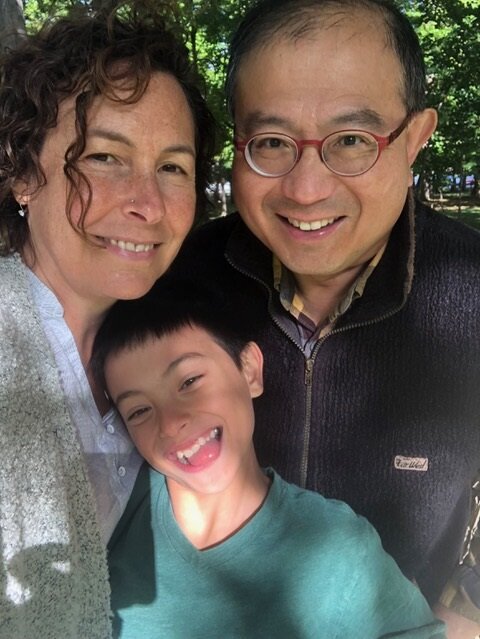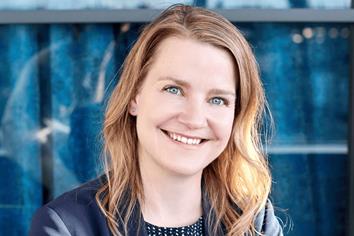
Dr. Kong Khoo with his family.
Dr. Kong Khoo was stunned when he was diagnosed with stage I lung cancer in March 2020 during a routine medical exam.
 Dr. Khoo immediately ordered a radon detector and measured the level of radon gas in his home of 25 years. The non-smoking oncologist with BC Cancer in Kelowna found the radon levels were significantly higher than Health Canada's radon guideline level of 200 Bq/m3.
Dr. Khoo immediately ordered a radon detector and measured the level of radon gas in his home of 25 years. The non-smoking oncologist with BC Cancer in Kelowna found the radon levels were significantly higher than Health Canada's radon guideline level of 200 Bq/m3.
"The radon detector was the most important thing I’ve bought in my life," he said.
Radon is a naturally occurring radioactive gas that's produced when uranium breaks down in soil and rock. When radon gas mixes with outside air it usually gets diluted quickly and isn't a health concern. But when it seeps into homes through cracks in floors, walls and foundations, it can build up to dangerously high levels.
"Lung cancer linked to radon is completely preventable, yet each year, almost 5,000 people in Canada are diagnosed with it," says Dr. Xuan Zhao, a resident physician in Public Health and Preventive Medicine at the BC Centre for Disease Control (BCCDC).
"You can't see it, smell it, or taste it. That's why it's so important for everyone to know about radon, test for it, and take action to reduce our exposure."
Radon is the number one environmental cause of lung cancer in non-smokers and the second leading environmental cause of lung cancer for smokers. One in 10 smokers develop lung cancer, but add in long-term exposure to high levels of radon and the risk of lung cancer risk increases to 1 in 3.
Watch this short video to learn more about radon, cancer risk and what you can do to lower your exposure.
Dr. Xuan explains that once it's in the home, radon can break down into other radioactive particles that damage cells lining the lungs when inhaled. The tissue in our lungs is thin and delicate, so progressive damage over years can develop into cancer.
Health Canada recommends taking action to reduce radon in homes where the average annual radon concentration is higher than 200 Bq/m³ within two years. In homes with radon over 600 Bq/m³, they recommend acting within one year.
 "British Columbians can take the first step to reducing their exposure to this cancer-causing gas by testing their homes," says Dr. Cheryl Peters, a senior scientist for cancer prevention at B.C. Cancer and the BCCDC.
"British Columbians can take the first step to reducing their exposure to this cancer-causing gas by testing their homes," says Dr. Cheryl Peters, a senior scientist for cancer prevention at B.C. Cancer and the BCCDC.
Dr. Zhao adds that radon tests are easy to do, either on your own or through a
certified radon professional.
"We know radon is more common in Interior and Northern B.C. and in the Fraser Valley, but every part of B.C. has homes with high levels of radon. No matter the age, building type, or location of your home, the only way to be sure of the radon level in your home is to test," she says.
After Dr. Khoo tested his home, he immediately hired a specialist to reduce radon levels by installing a system to safely divert the gas through a pipe under his house.
"The irony of the situation isn't lost on me," admits Dr. Khoo, who sees first-hand the devastating effects of lung cancer on his patients. "I should have tested and acted years ago to protect myself and my family."
Dr. Khoo is grateful his cancer was caught early and successfully removed with surgery.
He continues to share his story – particularly during the month of November, Lung Cancer Awareness Month and Radon Action Month.
"I urge every homeowner to protect their family's health by checking for radon and taking any required mitigation measures," he said.
A great starting point to see how common elevated levels of radon are in your community is the BCCDC
online radon map. Radon levels vary widely across the province and can be different even within the same neighbourhood. Because of their airtight construction, new homes are more likely to trap radon at higher levels. Everyone, regardless of where they live in B.C. or the age of their house, should test their home for radon.
Long-term testing kits, which are the most accurate, are sold by the BC Lung Foundation and start at $50 and may also be available free-of-charge in certain parts of the province. Listed below are a few resources for radon detectors:
-
Radon Detector Library Lending Program
-
100 Radon Test Kit Challenge
-
Kits sold by the BC Lung Foundation
If you find high levels in your home, a professional certified with the
Canadian National Radon Proficiency Program (C-NRPP) can work with you to figure out what type of mitigation system works best for your home and budget.
As the high cost of radon reduction systems can be a barrier for some people, the Canadian Lung Association has a
Grant Program to partially fund radon reduction systems for those with lower income.
To learn more about radon, visit the
BCCDC website.

